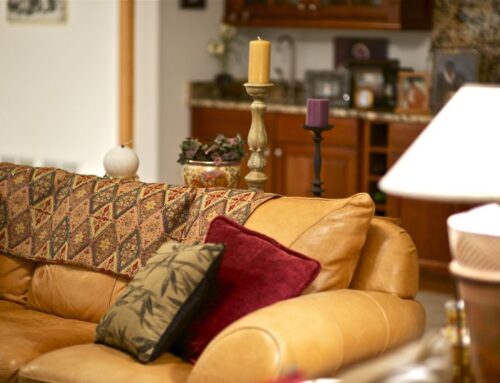When you’re cleaning leather furniture, it’s important to use the right products. Avoid wax-based furniture polishes and cleaning solvents. And make sure you never use ammonia water or oils. Whether your furniture is made of suede or acetate, avoiding these products will ensure that you don’t ruin your investment.
Avoiding cleaning solvents
Using cleaning solvents when using furniture polish can be harmful to the finish. They will dull the wood finish and attract dust. You should also avoid using furniture polish on damaged furniture. Using homemade wood cleaner recipes is another way to avoid using solvents. Use the products sparingly and only when needed.
Furniture polish is made from a combination of mineral oil, emulsifiers, and detergents. The mineral oil protects the finish and acts as a barrier against dirt. However, it will not create a wax layer or raise the sheen. If you use furniture polish on a piece of furniture that will be exposed to food, use a polish formulated for food contact areas.
Avoiding oils
 If you’re concerned about the effects of oils on your furniture, consider replacing your furniture polish with a natural oil like olive or coconut. These oils are inexpensive and have a longer shelf life. Using these on wooden utensils and cutting boards is also safer. If you’re not sure which type to use, try experimenting with a combination of these two.
If you’re concerned about the effects of oils on your furniture, consider replacing your furniture polish with a natural oil like olive or coconut. These oils are inexpensive and have a longer shelf life. Using these on wooden utensils and cutting boards is also safer. If you’re not sure which type to use, try experimenting with a combination of these two.
Furniture polish is made of a variety of different ingredients, some of which can be dangerous to the human body. You can be sickened by these substances via ingestion, inhalation, or even direct skin contact.
Avoiding ammonia water
When using furniture polish on leather, avoid using ammonia-based products. Ammonia can dissolve wood polish, so you must be careful when applying it. Instead, use a soft, clean sponge with cool water. This mixture will prevent damage to the wood. It may also stain fabric and clothing, so be sure to follow all instructions carefully.
If the leather polish has stained spots, you can use a solution of ammonia water instead of furniture polish. This solution contains equal parts of ammonia and water. Then, use the sponge to remove the marks. Be careful not to use too much water, as too much liquid will leave stains.
Avoiding wax-based furniture polishes
If you have leather furniture, you may want to avoid wax-based furniture polishes, because they contain chemicals that will harm your leather. Instead, consider applying a natural beeswax furniture polish instead. Many furniture polish products are silicon-based, making them easy to apply and buff off. These types of furniture polishes may not be suitable for use on leather, but they are safe for other wood types.
If you have antique furniture, you probably don’t want to use a silicone or wax-based polish, since silicone is easy to see. Instead, use oil-based furniture polishes, which are better suited for high-gloss finishes. A quality furniture polish will prevent you from having to polish your furniture more than twice a year.
Avoiding Pledge
When you use Pledge furniture polish on leather furniture, you aren’t just leaving your leather clean – you’re also protecting it from damage. This product contains a thin layer of silicone, which leaves a shiny shine on your furniture. This substance isn’t harmful to your furniture, but it can build up over time and make it difficult to repair. It can also leave a smudge on your furniture.
You can also make your own furniture polish. You can make it by combining lemon juice and white vinegar. The mixture will give your furniture a lovely sheen without the use of chemicals. If you’re not comfortable with making a DIY furniture polish, you can also try Pledge on old or cheaper pieces. Avoid Pledge on solid wood furniture, though. If you’re considering trying Pledge on leather furniture, make sure to test it on a piece of furniture first.
Cleaning leather with homemade furniture polish
There are a number of easy ways to clean leather furniture. You can use a mild dish soap and water solution to get the job done. The soap will help remove basic dirt and dust. Dampen a microfiber cloth with the soap solution and wipe the leather furniture thoroughly. To avoid soaking the leather, you can rinse the furniture with a wet cloth after every few strokes.
Adding a little lemon juice to your homemade leather cleaner will also give it a fresh citrus scent. Coconut oil is another great option, especially if it is fractionated so it doesn’t solidify. You can also use essential oils to clean leather. Citrus and antibacterial essential oils work best.





